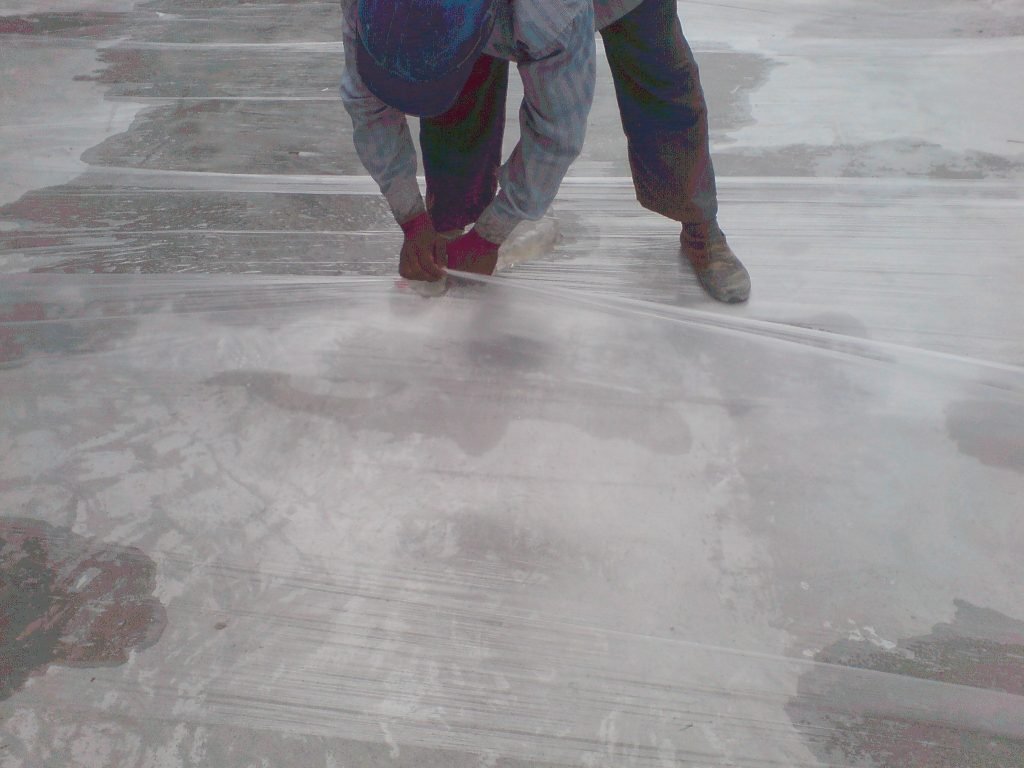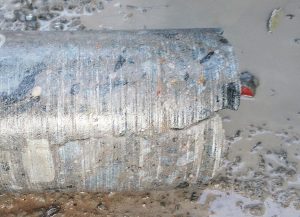concrete slabs are the severely vulnerable to some thin cracks called shrinkage cracks. Due to its thin sections and high surface area, the evaporation rate is high in concrete slabs. This is favorable for early shrinkage cracks in concrete slabs.
There are two types of shrinkage actions possible in concrete slabs. Namely, plastic shrinkage and drying shrinkage actions. Both these contract the concrete due to moisture evaporation loss.
Plastic shrinkage cracks in concrete slabs
These cracks occur due to the water loss from the concrete. When the evaporation rate is higher than the bleeding rate, the top of the slab surface shrinks due to drying and cracks at the end. Usually, concrete slabs undergo high evaporation due to their large surface area. Plastic shrinkage cracks can appear on the slab surface within the setting time mostly. So, these are classified as very early age cracks.
Age at the appearance is an important fact when identifying the reason for cracking. Read the concise guide on identifying the reasons for cracking.
How to identify

In appearance, plastic shrinkage cracks are generally isolated and narrow. Sometimes, these can pass through the section. Random, cracks following the reinforcement pattern or parallel cracks are possible with plastic shrinkage cracks in concrete slabs. See the following diagrams of common types of plastic shrinkage cracks

Plastic shrinkage in the concrete will depend on the characteristics of the mix, weather, and how you pour the concrete. Following are some facts that exaggerate the shrinkage action in concrete.
- Concrete mix
- Less water content
- High paste (cement and water) content
- Fineness of cement
- High fly ash content
- Weather
- High air temperature
- Low relative humidity
- High concrete temperature
- High wind speed
- Too much exposure to the sun
- Pouring and handling
- Early finishing the surface
- Inadequate vibration
- Pouring at day time
Reason for shrinkage cracking
The reason for this kind of crack is the high evaporation rate, the best-known method to solve these cracks by reducing the evaporation rate. The most common method is to use a windbreaker and sun blinds to cover the work area. If the slab is thick (imagine a raft foundation), you can also try to cool the concrete. This will help keep the internal temperature within limits. Misting the slab is another practical method to reduce the risk of plastic shrinkage cracks in concrete slabs. This will saturate the air and the evaporation rate will decrease.


In case if you encounter plastic shrinkage cracking, re-vibration and refinishing are possible as treatments. You only need to make sure the concrete hasn’t reached the final setting time.
Even though it’s easy to treat plastic shrinkage cracks, the best is to avoid them. You can use the following steps to calculate the evaporation rate in the environment. If that is higher than the bleeding rate of the concrete you should arrange remedial measures and control the evaporation
Follow down the steps to calculate the evaporation rate
- First, you need the following measurements to read the evaporation rate from the graph
- Environmental temperature
- Relative humidity
- Concrete temperature
- Wind velocity
- Measure the environmental temperature using a thermometer go vertically on the graph to reach the relative humidity available at the time.
- At the available R.H level go horizontal and reach the corresponding concrete temperature curve.
- Again move vertically down to meet the wind velocity present. Interpolate between lines to get the exact points
- Move horizontally to reach the evaporation rate at the moment

Drying shrinkage cracks in concrete slabs
The other type of shrinkage cracks is drying shrinkage cracks. These can appear within one to several months. So these cracks are late than thermal cracks. The most significant factor for drying shrinkage cracks is the water content in the mix.
Calcium silicate gel formed during hydration has moisture inside. During evaporation, this moisture leaves the gel by contracting the concrete. When the relative humidity is low, evaporation increases. If the concrete is restrained at the end, a crack develops.
3 main mechanisms develop drying shrinkage cracks.
- One-sided drying – drying one side of the slab or foundation can cause contraction on that surface separately. This makes the wet or moist side remain in the initial size while the drying surface shrinks. Cracks occur separating these dry and moist sides.
- When there are external resistance is present, even though the concrete dries simultaneously, cracks appear because of the restrains. Slab panels often undergo these cracks because the neighboring panels, beams, and columns act as the restraints
- Even with no restrains, drying shrinkage cracks appear due to different shrinkages at the end. Imagine using two mix proportions of concrete having different shrinkage properties. If they use to cast one element there can be drying shrinkage cracks between them. Here the concrete itself creates a restrain inside of it.
Usually, aggregates do not contract. But the cement paste around the aggregates shrinks. So, low slump, high aggregate nixed concrete shows less shrinkage compared to others. Shrinkage has no unit, it is measured using microstrains. The percentage of contraction with respect to the initial dimension is the strain. Ordinary concrete shows a shrinkage 40-800 microstrain shrinkage under 40% relative humidity.
Conclusion
Shrinkage cracks can affect the durability and appearance of the slab. However, these will not impact the functionality severely. Controlling the moisture loss from the concrete is the best way to prevent them. Using the evaporation rate nomograph you can read the evaporation rate at the time, keep the area covered to reduce it further. Re-vibration and re-finishing can be useful for very early age plastic shrinkage cracks.


